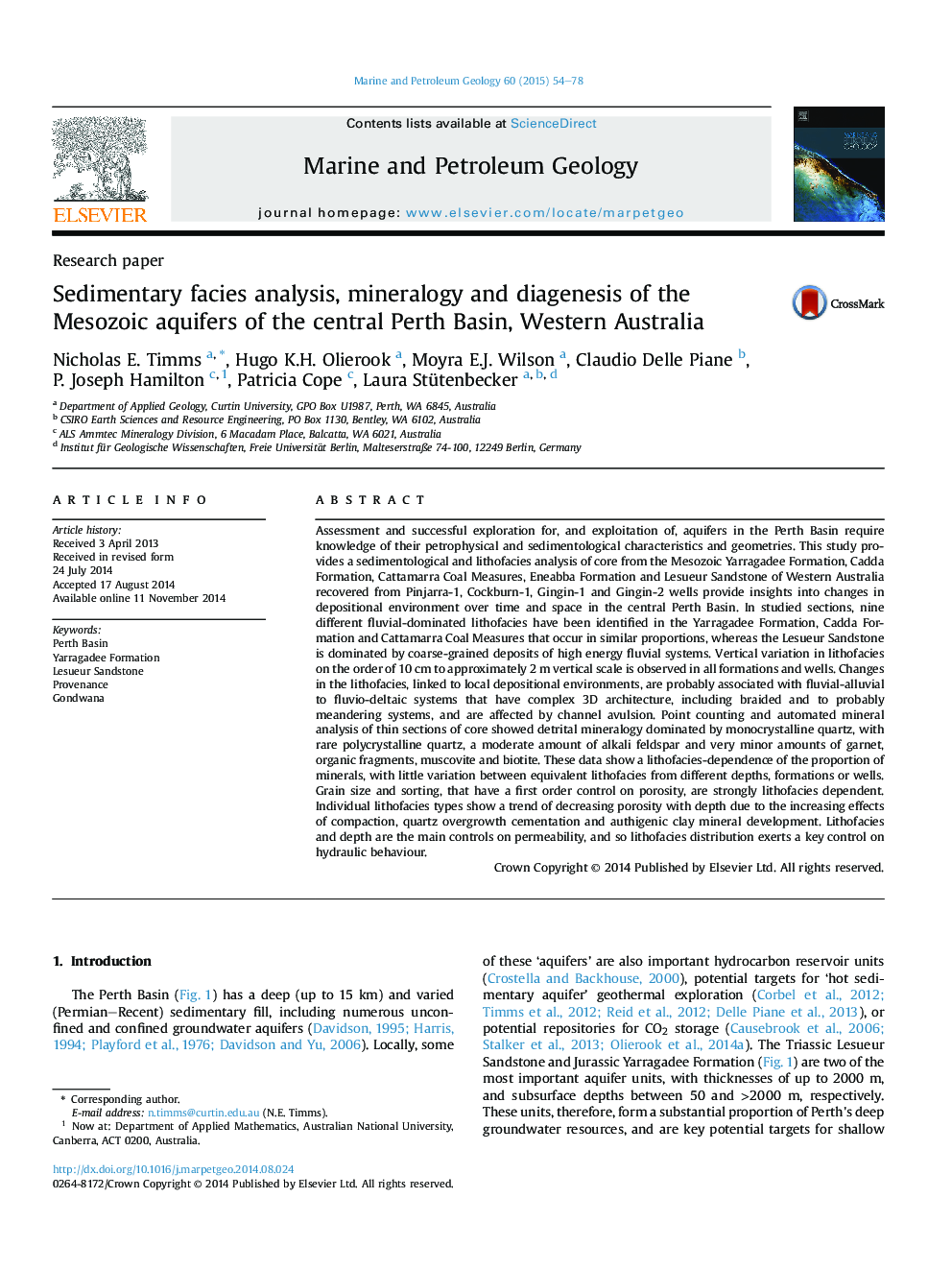| کد مقاله | کد نشریه | سال انتشار | مقاله انگلیسی | نسخه تمام متن |
|---|---|---|---|---|
| 4695534 | 1637165 | 2015 | 25 صفحه PDF | دانلود رایگان |
• Mesozoic aquifers in the Perth Basin, W. Australia, comprise a variety of facies.
• 0.1–2 m vertical changes in facies reflect complex local fluviatile environment.
• Detrital mineralogy is facies-dependent with little variation over space and time.
• Porosity reduction with depth occurred via quartz overgrowths, kaolinite and illite.
• Strong facies and depth control on permeability is key for hydraulic behavior.
Assessment and successful exploration for, and exploitation of, aquifers in the Perth Basin require knowledge of their petrophysical and sedimentological characteristics and geometries. This study provides a sedimentological and lithofacies analysis of core from the Mesozoic Yarragadee Formation, Cadda Formation, Cattamarra Coal Measures, Eneabba Formation and Lesueur Sandstone of Western Australia recovered from Pinjarra-1, Cockburn-1, Gingin-1 and Gingin-2 wells provide insights into changes in depositional environment over time and space in the central Perth Basin. In studied sections, nine different fluvial-dominated lithofacies have been identified in the Yarragadee Formation, Cadda Formation and Cattamarra Coal Measures that occur in similar proportions, whereas the Lesueur Sandstone is dominated by coarse-grained deposits of high energy fluvial systems. Vertical variation in lithofacies on the order of 10 cm to approximately 2 m vertical scale is observed in all formations and wells. Changes in the lithofacies, linked to local depositional environments, are probably associated with fluvial-alluvial to fluvio-deltaic systems that have complex 3D architecture, including braided and to probably meandering systems, and are affected by channel avulsion. Point counting and automated mineral analysis of thin sections of core showed detrital mineralogy dominated by monocrystalline quartz, with rare polycrystalline quartz, a moderate amount of alkali feldspar and very minor amounts of garnet, organic fragments, muscovite and biotite. These data show a lithofacies-dependence of the proportion of minerals, with little variation between equivalent lithofacies from different depths, formations or wells. Grain size and sorting, that have a first order control on porosity, are strongly lithofacies dependent. Individual lithofacies types show a trend of decreasing porosity with depth due to the increasing effects of compaction, quartz overgrowth cementation and authigenic clay mineral development. Lithofacies and depth are the main controls on permeability, and so lithofacies distribution exerts a key control on hydraulic behaviour.
Figure optionsDownload as PowerPoint slide
Journal: Marine and Petroleum Geology - Volume 60, February 2015, Pages 54–78
